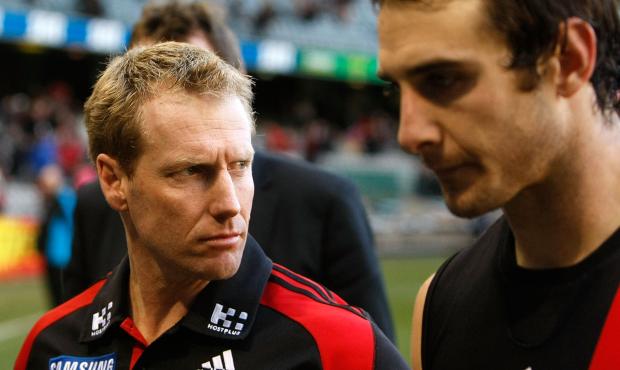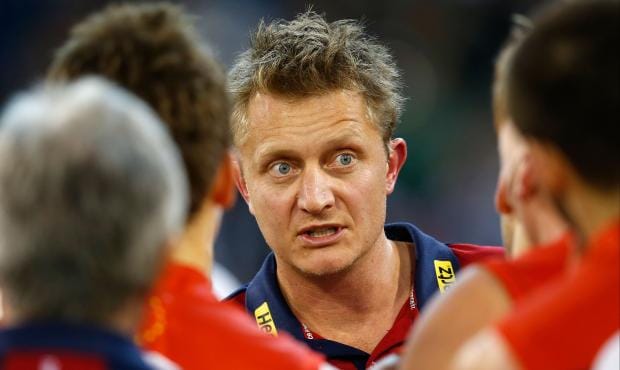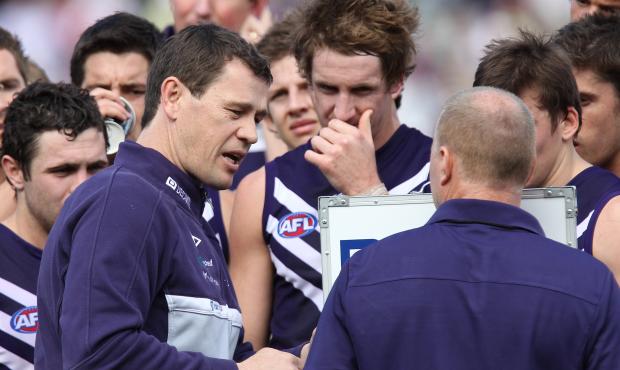The recent facts are stark.
Between Matthew Knights' sacking on August 29, 2010 and the dismissal of Scott Watters a month ago, a senior AFL coach was sacked, on average, every 129 days.
Hawthorn's Alastair Clarkson is the only coach in the same job at the same club as he was in 2009.
In the off-season alone, 50 coaches – assistants and senior – have changed jobs.
Since late 2010, five senior coaches also chose to depart their clubs, bringing the total of new appointments– excluding Mark Thompson replacing the suspended James Hird at Essendon – to 14.
Seven of the nine coaches given their marching orders during that three-year period from late 2010 were told to go before their contracts had ended.
Knights, Brett Ratten and Mark Harvey had even had their contracts extended only to be sacked before the term had ended.
Many find such decision making inexplicable as they consider it avoidable waste.
The same happened at Port Adelaide with Mark Williams before he was sacked midway through 2010.

On even the roughest estimate of $400,000-$450,000 a year for each coach, that means at least $3 million has walked out of club coffers since late 2010 – starting with Knights' sacking – because the senior coaching appointment, for whatever reason, failed and his tenure ended early.
Add payouts to support staff and the figure quickly rises to around $5 million – and industry observers think that is a conservative figure. Melbourne alone spent more than $1.45 million paying out coaches and administrators in the past financial year.
In some cases the AFL has been required to underpin the financial cost of the decision. That is no good to anyone and leaves supporters frustrated and potentially disillusioned.
Only Fremantle, which swooped on Ross Lyon at the expense of Harvey, and landed in a Grand Final two seasons later, has seen an obvious reward.
Most sunk costs will take longer to be recouped.
The flow-on effect has been real too.
Each post-sacking reconstruction of football departments has an inflationary effect on coaching payments as clubs try to assemble the best team possible and other clubs suddenly find themselves employing coaches in a tight market.
That means the poor decision of one club adds to each club's bottom line. It is a major reason the AFL is now examining what can be done to ensure football department costs are contained.
It's also adding tension to the equalisation debate because many in the industry shake their head at the waste of club money.
No one is questioning the right of sacked coaches to have their contracts paid out in full. However, the industry should examine how such waste – and also the often-unfair damage to reputations – can be avoided.
 Melbourne's restructure - including paying out Mark Neeld - has cost $1.45 million. Picture: AFL Media
Melbourne's restructure - including paying out Mark Neeld - has cost $1.45 million. Picture: AFL MediaThe focus must now turn towards how better calls can be made in the first instance, when either appointing or recontracting coaches.
AFL Coaches Association operations manager Paul Armstrong says that while there are signs clubs are improving in that area, much work is needed.
"The football industry still needs to get better at understanding what makes a good coach," Armstrong told AFL.com.au.
If the sacking of three coaches in 2012 doesn't tell you that, nothing will.
Responsible for a full-time staff of around 30 people and 42 players, as well as a huge array of external responsibilities, the coach is the CEO of football.
The first thing worth noting is being a good assistant coach is no longer the only indicator of potential success.
Read Demons coach Paul Roos' recent explanation on melbournefc.com.au of the role of the modern coach and you understand why:
"I think every year it becomes more of a management role: getting good staff, making sure they are clear on what their roles are, setting a game plan, but really management," Roos said.
"I think that is the thing that struck me, even over the time in Sydney. Each year you have more staff coming in, [you] deal with medical, fitness, board, membership and sponsorship, so the senior coach is like the CEO.
"If people think that just [by] appointing a senior coach then your problems are fixed then they are kidding themselves, because a lot more goes into sorting out a footy club than getting a senior coach in position."
The second thing clubs need to do well in order to get the right coach is understand exactly what type of coach they need at any given stage of their development.
Boards need to set criteria, be prepared to find the type of person who fulfils those needs and then stick with that approach.
In other words, don't panic.

It's worth noting the support Western Bulldogs coach Brendan McCartney has received through two presidents and the stable environment that club has created as a result.
Finding the coach can be left to a panel but the industry should be canvassed widely.
Involving the Coaches Association seems a no-brainer. The AFL should be also consulted, and the broader football industry – including state leagues and development programs – should be looked at.
The fact is no one in football wants to see a coach appointed who is not ready or will never be right. It's not fair on anyone and good people can get hurt in the process.
An accreditation process that puts people in the market for a senior coach might seem extreme, but it would certainly make an appointment less likely to fail.
And once a senior coach is appointed, the industry needs to continue to support programs that make coaches better and helps clubs to get better at managing them.
If that sounds costly, think of the money being spent now.
It's critical to the game's future, and it could save a lot of money and angst.


